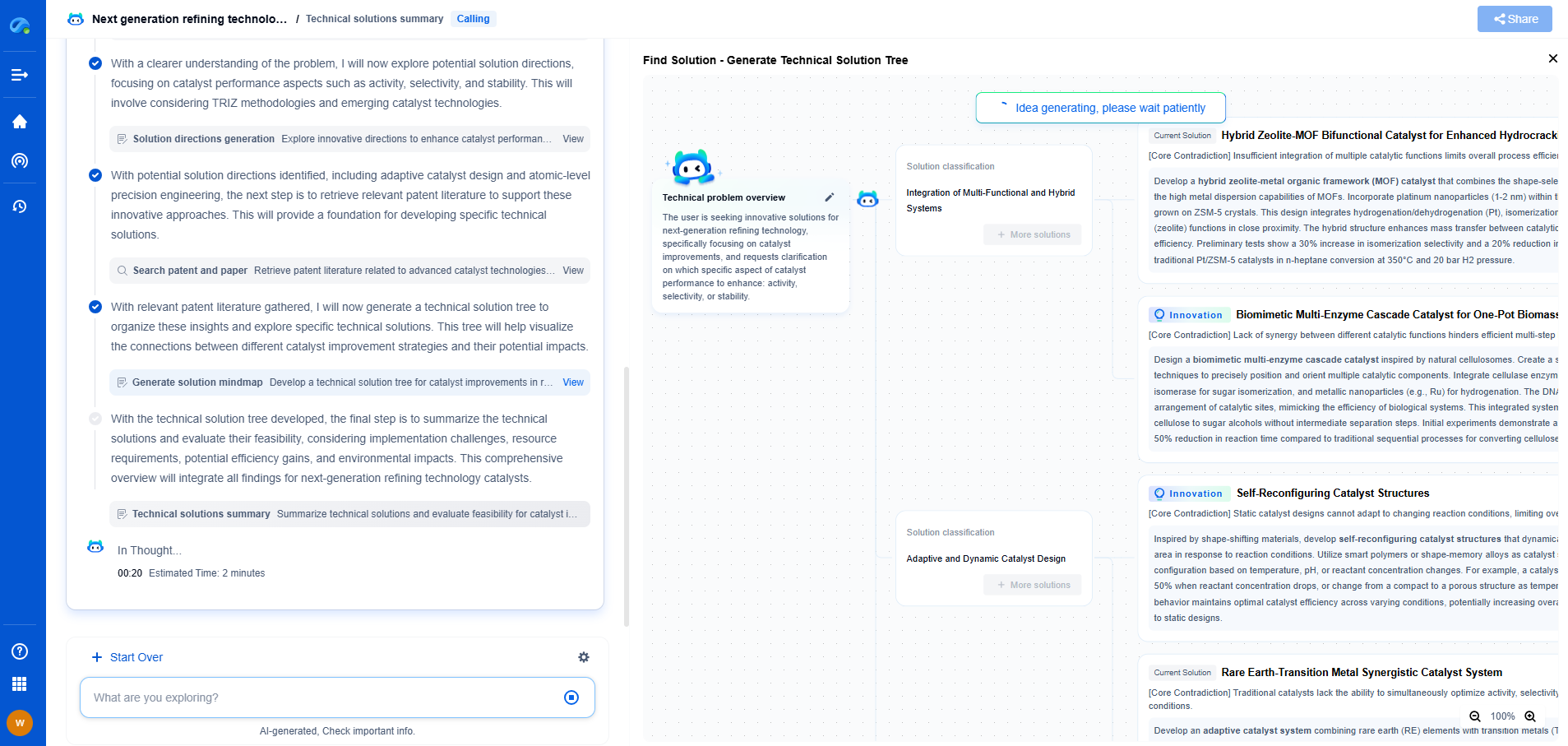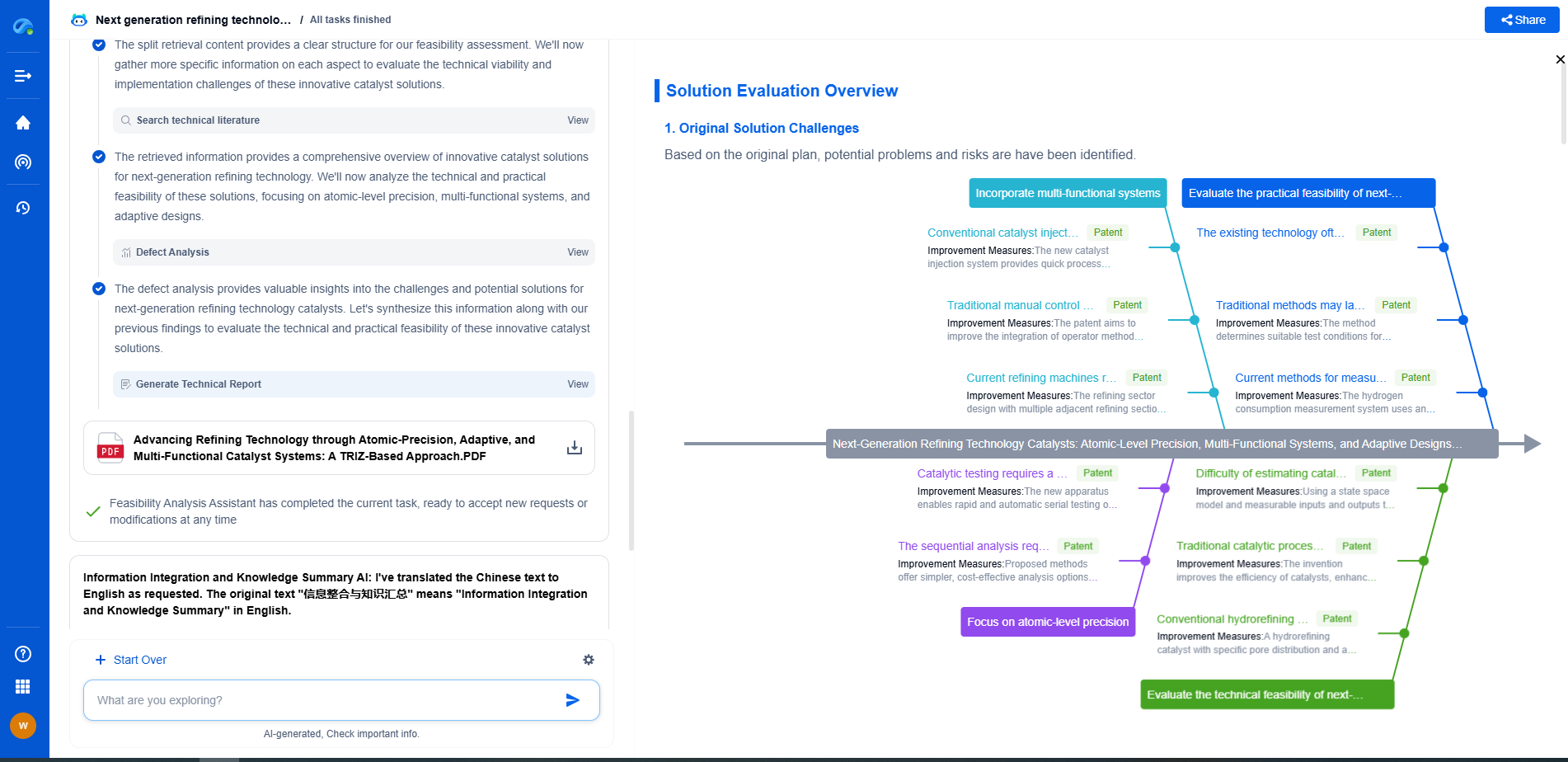What every petroleum engineer should know about real-time drilling data
JUN 20, 2025 |
In the ever-evolving landscape of the oil and gas industry, the capacity to leverage real-time drilling data has become indispensable for petroleum engineers. This data serves as a cornerstone for making informed decisions that enhance operational efficiency, safety, and economic outcomes. Understanding its nuances and applications can significantly elevate a petroleum engineer’s ability to contribute to successful drilling operations.
The Basics of Real-Time Drilling Data
Real-time drilling data encompasses a spectrum of information gathered during the drilling process. This data includes metrics such as rate of penetration (ROP), weight on bit (WOB), torque, mud properties, and downhole conditions like pressure and temperature. These metrics are captured using advanced sensors and transmitted instantaneously to engineers and decision-makers on the surface.
The primary advantage of real-time data lies in its immediacy. Unlike traditional methods that rely on retrospective analysis, real-time data allows for live monitoring and swift adjustments to be made. This capability is crucial in identifying and rectifying issues before they escalate into costly problems.
Enhancing Operational Efficiency
One of the most significant benefits of utilizing real-time drilling data is the enhancement of operational efficiency. By continuously monitoring drilling parameters, engineers can optimize the drilling process. For example, if the data indicates that the ROP is lower than expected, adjustments can be made to the drilling parameters to improve this metric. This proactive approach minimizes downtime and reduces non-productive time (NPT).
Furthermore, real-time data enables better management of drilling fluids. By monitoring mud properties such as density and viscosity, engineers can adjust the composition to maintain optimal wellbore stability and prevent problems such as wellbore collapse or blowouts.
Improving Safety and Risk Management
Safety in drilling operations is paramount, and real-time data plays a critical role in mitigating risks. By providing immediate insights into downhole conditions, engineers can quickly identify and respond to hazardous situations. For example, real-time pressure data can alert engineers to the presence of gas kicks, allowing for rapid intervention to prevent blowouts.
Moreover, the ability to monitor and analyze data in real-time enhances decision-making in emergency situations. Engineers can devise and implement contingency plans with greater precision, reducing the likelihood of accidents and their associated costs.
Economic Implications
The economic implications of utilizing real-time drilling data are profound. By improving efficiency and safety, companies can significantly reduce drilling costs. Enhanced data analysis leads to better well placement and design, which in turn maximizes hydrocarbon recovery and minimizes the production of unwanted fluids.
Additionally, the use of real-time data allows for more accurate forecasting and budgeting, as engineers can anticipate potential issues and allocate resources accordingly. The result is a more predictable and stable financial performance for drilling projects.
Challenges and Considerations
While the benefits of real-time drilling data are substantial, there are challenges to consider. The sheer volume of data generated can be overwhelming, requiring sophisticated data management systems and skilled personnel to analyze and interpret the information effectively. This necessitates investment in both technology and training.
Moreover, the reliability and accuracy of the data are critical. Calibration and maintenance of sensors, as well as robust data transmission systems, are essential to ensure the integrity of the data being used for decision-making.
Conclusion
In conclusion, real-time drilling data represents a transformative tool for petroleum engineers. Its ability to enhance operational efficiency, improve safety, and support economic decision-making makes it an invaluable asset in the modern oil and gas industry. However, to fully harness its potential, companies must invest in the appropriate technology and training. By doing so, they can ensure that their engineers are equipped to make the most of this crucial resource, driving the industry forward into a more efficient and safer future.
Navigating the Complexities of Drilling Innovation? Let AI Do the Heavy Lifting
In an industry where subsurface conditions, materials science, and drilling dynamics evolve rapidly, staying ahead of technical innovation and protecting your intellectual property can be overwhelming.
Patsnap Eureka, our cutting-edge AI assistant, is built for R&D and IP professionals in high-tech industries like drilling technologies. Whether you're optimizing rotary steerable systems, evaluating high-temperature materials, or exploring next-gen automation in directional drilling, Eureka enables real-time analysis of the latest patents, technology landscapes, and competitive movements—all from one intelligent, intuitive platform.
Ready to accelerate your development cycle and make strategic decisions with confidence? Explore Patsnap Eureka today—where smart drilling starts with smarter insights.
- R&D
- Intellectual Property
- Life Sciences
- Materials
- Tech Scout
- Unparalleled Data Quality
- Higher Quality Content
- 60% Fewer Hallucinations
Browse by: Latest US Patents, China's latest patents, Technical Efficacy Thesaurus, Application Domain, Technology Topic, Popular Technical Reports.
© 2025 PatSnap. All rights reserved.Legal|Privacy policy|Modern Slavery Act Transparency Statement|Sitemap|About US| Contact US: help@patsnap.com

